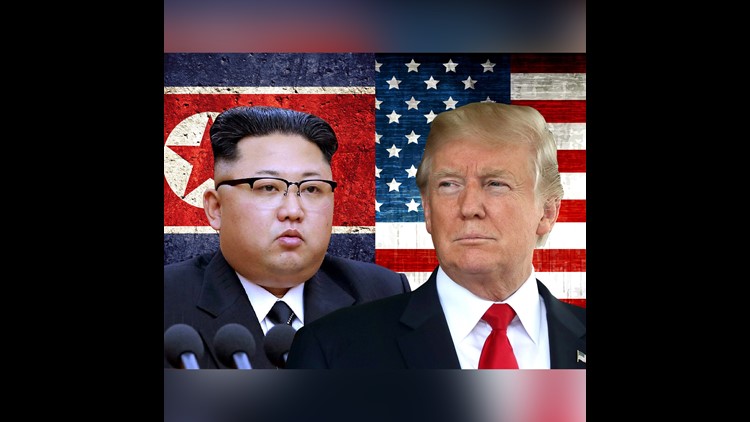(CNN) — President Donald Trump has requested options for reducing the number of US troops in South Korea, the New York Times reported late Thursday, citing several people briefed on the matter.
The President’s request of the Defense Department comes ahead of his highly anticipated sit-down with North Korean leader Kim Jong Un, expected to take place along the demilitarized zone (DMZ) between the two Koreas.
North and South Korea recently held their own historic summit, which included an agreement on holding talks over denuclearizing the Korean Peninsula and bringing a formal conclusion to the Korean War.
If the peace talks continue among countries, it could decrease the need for a US presence in the region, officials told the newspaper.
But National security adviser John Bolton on Friday disputed the Times’ report, calling it “utter nonsense.”
“The President has not asked the Pentagon to provide options for reducing American forces stationed in South Korea,” Bolton said in a statement.
Future reduction
A statement released by the office of the South Korean President on Friday also refuted suggestions the US was considering a reduction in troop numbers. According to the statement, an official at the US National Security Council told South Korean National Security Adviser Chung Eui-yong the New York Times report was “not true at all.”
Chung had raised the issue Thursday night with Bolton in a phone call, an official familiar with the conversation told CNN. Bolton told Chung it was untrue that Trump is ordering plans to withdraw US troops, according to the official.
The official also acknowledged that Trump has publicly expressed frustrations at the cost and size of the US presence in South Korea and noted if the Korean War officially comes to an end, there would have to be some sort of reduction.
The official said the troop withdrawal would not be on the table in talks with Kim, and that Kim has not raised this as a possibility ahead of the summit.
When asked about the administration’s current position on removing US troops from the Korean Peninsula, a source close to the White House told CNN Thursday that it is viewed as something that could possibly happen in the future but “not until long after the nukes are verifiably gone.”
“That is the position,” the source said.
The source, who is familiar with the administration’s internal discussions, added removing US troops is not something currently being considered as a bargaining chip but as a possibility should there be no need for them down the line.
According to the New York Times report, the officials would not say if Trump was seeking options on a partial withdrawal or a full withdrawal, but said the latter was unlikely.
During a South Korean presidential briefing Wednesday, officials linked the presence of US forces in South Korea to wider issues of peace and regional security.
“A peace treaty cannot be achieved between South Korea-North Korea or North Korea-United States. A peace treaty signifies an agreement to establish legal and systematic policies for the whole Korean peninsula,” the official said, referencing the pledge made by South Korean President Moon Jae-in and Kim to bring a formal end to the Korean War, 65 years after hostilities ceased.
“The status of the US forces was brought up from that relevance and I can reiterate South Korean government’s stance: we believe the US forces are needed to take a role of a mediator in the region of tensions and military conflicts in other nations such as Japan and China,” they added.
Controversial presence
The US has around 28,000 troops in South Korea, a legacy of the Cold War and the conflict on the Peninsula.
According to US Forces Korea, its mission is to “deter aggression and if necessary, defend the Republic of Korea to maintain stability in Northeast Asia.”
During the presidential campaign and since, Trump had complained about the cost to the US of maintaining such a large force in Asia. Along with the Korean deployment, there are about 49,000 US troops in Japan.
In 2016, Army Gen. Vincent Brooks told the Senate Armed Services Committee the Korean government provided $808 million to support US troops in the region, and has paid 92% of a $10.8 billion base relocation project. It was actually cheaper to keep the troops in Korea than the US, Brooks said.
North Korea has long called for a reduction in US forces on the Peninsula, though it recently dropped their withdrawal as a precondition of denuclearization, according to South Korea.
Joint military exercises between South Korea and the US, which defenders argue are vital to maintaining operational effectiveness, regularly increase tensions on the Peninsula and are seen by North Korea as acts of hostility. Such exercises have featured drills including mock “decapitation strikes” against the North Korean leadership.
Within South Korea too there are critics of the US military presence. Last year, there were large protests against the deployment of the US THAAD missile defense system.
South Korean critics say THAAD, which would not prevent short range missiles striking the country, does not offer a strategic defense against North Korea, and is more about wider US tactical goals in the region.
In particular, they say the system’s advanced radar, which can see into China, is designed at reducing the effectiveness of that country’s military capabilities — a view Beijing shares.
After the system was first deployed, China reacted with an informal trade embargo, a chill which affected South Korean businesses and entertainers, and led to a diplomatic chill.



